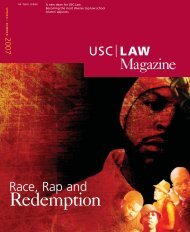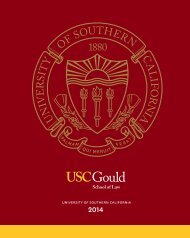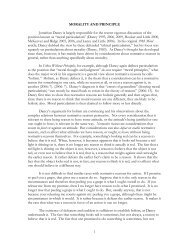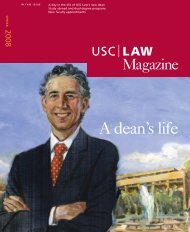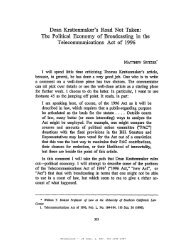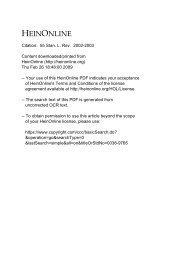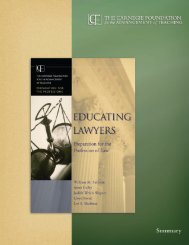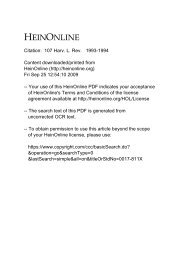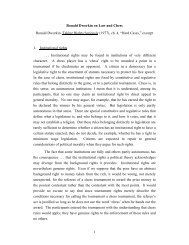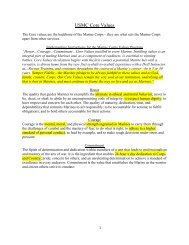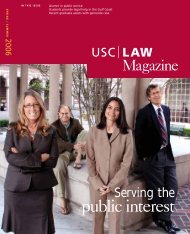Part I: Multiple Choice Questions - USC Gould School of Law
Part I: Multiple Choice Questions - USC Gould School of Law
Part I: Multiple Choice Questions - USC Gould School of Law
- No tags were found...
Create successful ePaper yourself
Turn your PDF publications into a flip-book with our unique Google optimized e-Paper software.
B. You can expect questions that track our class discussion <strong>of</strong> the main cases. Suchquestions would not be about details, such as who wrote the majority opinion in Smith, orwhich state supreme court decided Blanchflower. Instead, the questions would explorelegal reasoning. Here are two examples <strong>of</strong> such questions.3. At T1, the Supreme Court decided Smith. At T2, Mr. Watson traded illegal drugs fora firearm, and was convicted in the trial court. At T3, the Supreme Court has agreed todecide whether Watson’s conduct counts as “using a firearm” within the meaning <strong>of</strong> thesentence-enhancement statute. You represent Watson (you are part <strong>of</strong> the legal teamdefending him) and you are preparing for oral argument before the Supreme Court. Inyour argument, you plan to:a. Argue that the holding in the Smith case is best stated at a low level <strong>of</strong> generalityrather than a high level <strong>of</strong> generality.b. Urge the Court to assign more weight to the sentence-enhancement statute’spolicy goals than to the ordinary meaning <strong>of</strong> “uses a firearm.”c. Argue that in ordinary language, one who pays $1.00 for a cup <strong>of</strong> c<strong>of</strong>fee has“used” the dollar in the course <strong>of</strong> the transaction, but has not “used” the c<strong>of</strong>fee.d. Rely, as your strongest argument, on the historical fact that when Congressenacted the statute, it never thought <strong>of</strong> the fact pattern in which defendant tradesillegal drugs for a firearm.e. (a) and (c)4. In Garratt v. Dailey, the Washington State Supreme Court decided that:a. When Brian moved the chair, he knew to a substantial certainty that Ruth wouldattempt to sit where the chair had been.b. A minor can be liable for battery only if he or she has an estate from which he orshe could pay an award <strong>of</strong> damages.c. Knowledge to a substantial certainty that a harmful contact will result, counts asan intent to bring about a harmful contact, and thus satisfies the intent requirementfor battery.d. Like having an intention to do a particular act, knowing that one is doing aparticular act satisfies the volitional act requirement for battery.e. The case should be remanded to the trial court, with instructions to determinewhether Brian had a purpose to harm Ruth or play a prank on her, when he movedthe chair.Page 2 <strong>of</strong> 4




